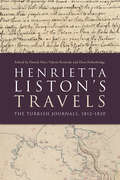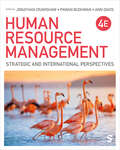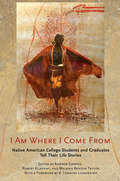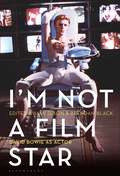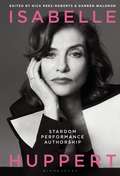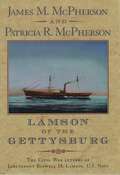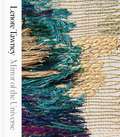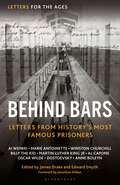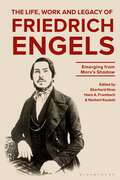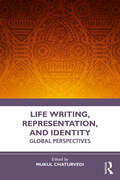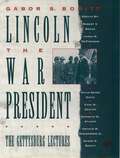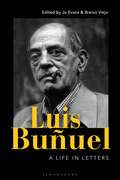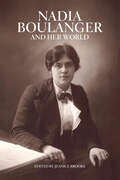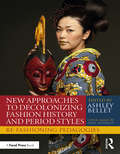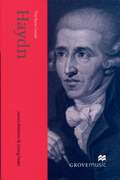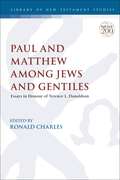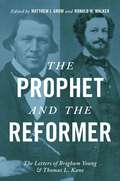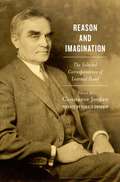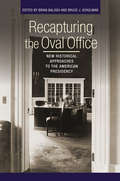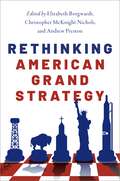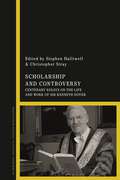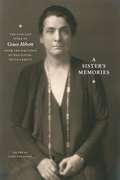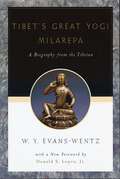- Table View
- List View
Henrietta Liston's Travels: The Turkish Journals, 1812-1823
Henrietta Liston’s Constantinople journal is a significant and hitherto virtually unknown work of women's travel writing. As the wife of the British Ambassador to the Porte, Liston had privileged access to parts of the Sultan’s entourage and the Ottoman elite. Her journal details her journey by sea from England to Istanbul and the diplomatic mission’s Mediterranean stops at the time of the Napoleonic wars and reflects on the political situation of Europe, focusing in particular on the British and the Ottoman Empires. Yet it also offers a human-centred version of the picturesque, and includes depictions of a plague-ridden Constantinople, a visit to the harem of the Kaimakam, excursions to Belgrade Village, the presentation of ambassadors in the Seraglio, and the departure of pilgrims on the hajj. This edition features Liston’s journal alongside a selection of her other, shorter writings from Turkey, including accounts of key diplomatic incidents and personal experiences.
Human Resource Management: Strategic and International Perspectives
This popular text treats international, strategic and contemporary issues as central to the study and practice of Human Resource Management. Its practical focus helps you develop the skills needed for the world of work, through learning features such as HRM in Practice, Developing Key Skills and Debating HRM. The fourth edition has been thoroughly updated and brings you: • Case studies which offer a link between theory and practical challenges in the international HR environment • A new chapter on Work-Related Mental Health and Wellbeing • Coverage of cutting-edge topics such as Diversity and Inclusion, Sustainability, Artificial Intelligence and Corporate Social Responsibility • NEW Future Insights and Considering Sustainability features Jonathan R. Crawshaw is Senior Lecturer (Associate Professor) and Director of Research for the Work and Organisation Department at Aston Business School, Aston University. Pawan Budhwar is the 50th Anniversary Professor of International HRM at Aston Business school. Ann Davis is Professor and Associate Dean for Academic Resourcing and Development at the University of Sydney Business School.
I Am Where I Come From: Native American College Students and Graduates Tell Their Life Stories
"The organizing principle for this anthology is the common Native American heritage of its authors; and yet that thread proves to be the most tenuous of all, as the experience of indigeneity differs radically for each of them. While many experience a centripetal pull toward a cohesive Indian experience, the indications throughout these essays lean toward a richer, more illustrative panorama of difference. What tends to bind them together are not cultural practices or spiritual attitudes per se, but rather circumstances that have no exclusive province in Indian country: that is, first and foremost, poverty, and its attendant symptoms of violence, substance abuse, and both physical and mental illness.... Education plays a critical role in such lives: many of the authors recall adoring school as young people, as it constituted a place of escape and a rare opportunity to thrive.... While many of the writers do return to their tribal communities after graduation, ideas about 'home' become more malleable and complicated."—from the IntroductionI Am Where I Come From presents the autobiographies of thirteen Native American undergraduates and graduates of Dartmouth College, ten of them current and recent students. Twenty years ago, Cornell University Press published First Person, First Peoples: Native American College Graduates Tell Their Life Stories, also about the experiences of Native American students at Dartmouth College. I Am Where I Come From addresses similar themes and experiences, but it is very much a new book for a new generation of college students.Three of the essays from the earlier book are gathered into a section titled "Continuing Education," each followed by a shorter reflection from the author on his or her experience since writing the original essay. All three have changed jobs multiple times, returned to school for advanced degrees, started and increased their families, and, along the way, continuously revised and refined what it means to be Indian.The autobiographies contained in I Am Where I Come From explore issues of native identity, adjustment to the college environment, cultural and familial influences, and academic and career aspirations. The memoirs are notable for their eloquence and bravery.
I’m Not a Film Star: David Bowie as Actor
The first collection dedicated to David Bowie's acting career shows that his film characterisations and performance styles shift and reform as decoratively as his musical personas. Though he was described as the most influential pop artis of the 20th century, whose work became synonymous with mask, mystery, sexual excess and ch-ch-ch-changing genres, Bowie also applied his genius to the craft of acting.Bowie's considerable filmography is systematically examined in 12 scholarly essays that include tributes to Bowie's performance craft in other media forms. Classic films such as The Prestige and Merry Christmas, Mr. Lawrence, cult hits Labyrinth and The Man Who Fell To Earth, as well as lesser-known roles in The Image, Christiane F. and Broadway hit The Elephant Man are viewed, not simply through the lens of Bowie's mega-stardom, but as the work of a serious actor with inimitable talent. This compelling analysis celebrates the risk-taking intelligence and bravura of David Bowie: actor, mime, mimic and icon.
Isabelle Huppert: Stardom, Performance, Authorship
Featuring a lineup of distinguished academics, this collection remedies the absence of scholarly attention on French cinematic legend Isabelle Huppert. This volume deconstructs Huppert's star persona and public profile through critical and theoretical analysis of her various screen roles-from her very early appearances alongside Romy Schneider in César et Rosalie (Sautet, 1972) and Gérard Depardieu in Les Valseuses (1974) to a number of celebrated collaborations with high-profile European auteurs such as Catherine Breillat, Claire Denis, Jean-Luc Godard, Michael Haneke and Joseph Losey, and with more popular auteurs such as Claude Chabrol and François Ozon. Known for a cerebral internalization of characterization, a technical mastery of extreme emotions, and a singular brand of icy intellectualism, Huppert's performances continue to impress, stun and surprise audiences. By focusing on several theoretical questions that relate to image, identity, sexuality and place, this volume situates Huppert's star persona in the more practical creative contexts of performance, authorship, genre and collaboration. This volume contrasts complementary critical accounts of her stardom by working across the different periods and territories of her career.
Lamson of the Gettysburg: The Civil War Letters of Lieutenant Roswell H. Lamson, U.S. Navy
Roswell Lamson was one of the boldest and most skillful young officers in the Union navy. Second in the class of 1862 at Annapolis (he took his final exam while at sea during the war), he commanded more ships and flotillas than any other officer of his age or rank in the service, climaxed by his captaincy of the navy's fastest ship in 1864, USS Gettysburg. Now, in Lamson of the Gettysburg, we have the war-time letters of this striking naval figure. What's more, these are letters of exceptional quality. James M. McPherson, co-editor of the collection with his wife Patricia and one of America's preeminent Civil War historians, writes that "few sets of letters equal and none surpass those of Lamson for richness of description, scope of coverage, or keenness of perception and analysis." Indeed, the McPhersons term Lamson's correspondence "the best Civil War navy letters we have ever read or expect to read." Throughout the war, Lamson always seemed to be where the action was on the South Atlantic coast, and these letters describe with striking immediacy the part he played in these events. While serving on the USS Wabash, for instance, he directed the big deck guns that did the most damage to enemy forts at Hatteras Inlet and Port Royal, two major naval victories. He was the officer who took command of the CSS Planter in May 1862, when slaves led by Robert Smalls ran her past Confederate fortifications in Charleston harbor and delivered her to the Union fleet. He commanded a gunboat fleet on the Nansemond River that helped stop James Longstreet's advance on Norfolk. In a daring attempt to blow up Fort Fisher, the huge earthwork fortress that guarded the entrance into the Cape Fear river, he towed the USS Louisiana (packed with more than two hundred tons of gunpowder) directly under the guns of the fort, sneaking into the shallows behind a rebel blockade runner, (Lamson describes "a terrific explosion. An immense column of flame rose towards the sky, and four distinct reports like that of sharp heavy thunder were heard and a dense mass of smoke enveloped everything"). And a few weeks later, he led a contingent of seventy men from the Gettysburg as part of the January 15, 1865 assault on the sea-face parapets of Fort Fisher, where he himself was wounded and his close friend, Samuel W. Preston, died. The letters also capture the spirited personality of Lamson himself, resolved to "stand by the Union as long as there is a plank afloat," but also deeply ambivalent about the war. In a moving passage early in the collection, he describes leaving Annapolis for war duty on the USS Constitution (Old Ironsides): "We gave three cheers for Capt R., three for the troops, and for old friendship's sake three for those of our number who intending to resign [to join the Confederacy] were requested not to go on board. Some of my best friends were among them. This will be a sad sad war. It will be more painful to strike than to be struck." The publication of the letters of Roswell Lamson marks a major addition to Civil War literature. Featuring superb introductions to each section as well as informative notes that explain references in the correspondence to people, ships, land and sea battles, or homefront news, Lamson of The Gettysburg now joins the first rank of Civil War sources. One of the few accounts we have from the perspective of a navy officer, it is a book that everyone interested in the Civil War or in American naval history will want to read.
Lenore Tawney: Mirror of the Universe
Recent years have seen an enormous surge of interest in fiber arts, with works made of thread on display in art museums around the world. But this art form only began to transcend its origins as a humble craft in the late nineteenth and early twentieth centuries, and it wasn’t until the 1950s and 1960s that artists used the fiber arts to build critical practices that challenged the definitions of painting, drawing, and sculpture. One of those artists was Lenore Tawney (1907–2007). Raised and trained in Chicago before she moved to New York, Tawney had a storied career. She was known for employing an ancient Peruvian gauze weave technique to create a painterly effect that appeared to float in space rather than cling to the wall, as well as for being one of the first artists to blend sculptural techniques with weaving practices and, in the process, pioneered a new direction in fiber art. Despite her prominence on the New York art scene, however, she has only recently begun to receive her due from the greater art world. Accompanying a retrospective at the John Michael Kohler Arts Center, this catalog features a comprehensive biography of Tawney, additional essays on her work, and two hundred full-color illustrations, making it of interest to contemporary artists, art historians, and the growing audience for fiber art. Copublished with the John Michael Kohler Arts Center.
Letters for the Ages Behind Bars: Letters from History's Most Famous Prisoners (Letters for the Ages)
Letters for the Ages Behind Bars is a history of imprisonment told through the letters of people incarcerated over many centuries, for crimes committed or sometimes even for no reason at all. It is a story that runs from St Paul right up to the present day.The act of depriving someone of their liberty is one of humankind's most enduring responses to 'crime' through history. What society has sought to achieve over the years by doing so has shifted across the centuries and there is now a variety of purposes: to express disapproval; for the purpose of straight-up punishment through the removal of freedom; to protect the general public; to rehabilitate, perhaps even to forget about those with whom we simply cannot cope. The letters assembled here come from all parts of the world, and from time immemorial: Thomas Cromwell, Mary Queen of Scots, Eamon De Valera, Al Capone, Martin Luther King and many more.These letters not only reveal what it is like to be behind bars, but raise issues that are still of pressing interest for us today - such as the death penalty, miscarriages of justice, redemption and social change. They shed light on a system which is primarily one of contradictions – there are letters which inspire, horrify, letters which awe and condemn – even letters which make you laugh or cry.
The Letters of Elizabeth Rigby, Lady Eastlake (Liverpool English Texts and Studies #55)
An Open Access edition of this book is available on the Liverpool University Press website and the OAPEN library. 2009 was the bicentenary of the birth of the English writer, translator, critic and amateur artist Elizabeth Rigby, Lady Eastlake (1809-1893). Bringing together a comprehensive collection of her surviving correspondence, the Letters of Elizabeth Rigby, Lady Eastlake reveals significant new material about this extraordinary figure in Victorian society. The scope of Lady Eastlake’s writing is wide and interdisciplinary, which recommends her as a significant figure in Victorian culture, giving rise to revelations about the ways in which different cultural activities were linked. Lady Eastlake lived for extended periods of time abroad in Germany and Estonia, and wrote an early work about her impressions of the Baltic, her subsequent writing took the form of reviews for the periodical press, including reviews of Jane Eyre, Vanity Fair, Ruskin, Coleridge, and Madame de Stael. She also wrote on women’s subjects, including articles on the education of women. However, the great proportions of her publications are art-related reviews: she wrote one of earliest critical texts on photography and produced several essays on artists. The lively correspondence of Lady Eastlake not only contributes to a more holistic understanding of nineteenth-century culture, it also shows how a well connected woman could play an important role in the Victorian art world.
The Life, Work and Legacy of Friedrich Engels: Emerging from Marx’s Shadow
As the author of The Condition of the Working Class in England and, along with Karl Marx, The Communist Manifesto, Friedrich Engels is a seminal 19th-century figure; the co-founder of Marxism, he left an indelible impression as a philosopher, political theorist, economist, historian and revolutionary socialist. The Life, Work and Legacy of Friedrich Engels is nevertheless the first book to comprehensively explore Engels' contributions in all of these spheres.The book sees 13 experts from a range of scholarly backgrounds examine Engels and his writing in relation to topics including the United States and the future of capitalism, European social democracy and the nature of the political economy, with technology, capital, and labor acting as fundamental cross-cutting themes throughout. The volume analyses the intriguing relationship between Engels and Karl Marx, the towering historical figure whose long shadow has obscured the achievements of Engels for so long, and reassesses Engels' significance in this context. There are 66 images to be found throughout the text, 30 of these in colour, as well as a conclusion which successfully views Engels in the context of the age.As a journalist, author and communist figurehead, Engels dealt succinctly – and with strong opinions – with the core questions of the developments changing the globe in the 19th century and The Life, Work and Legacy of Friedrich Engels finally shines a light on this in a compelling call for revisionism.
Life Writing, Representation and Identity: Global Perspectives
This book focuses on varied forms of self-referential storytelling or life writing and its emergence as a democratic and inclusive genre, both globally and in India, and its intersections with history, fiction, memory, truth and identity. The book examines the practice of life writing and its scope for accommodating diverse voices, distinct identities, collaborations and non-hierarchical connections as it gives voice to oral, silenced and marginalized communities. It explores forms like auto/biographical fiction, digital storytelling, graphic memoirs, and testimonies of migration and exile, among others. The eclectic collection of essays in this volume draws attention towards the transformative possibilities of life writing as it engages with issues of resistance, recuperation, re-inscribing individual and collective memories, histories, and promotes an understanding of multicultural others. Focusing on the multiple ways in which the production, circulation, and consumption of life writing has helped to reimagine and redefine individual and collective identities in different cultural and geopolitical contexts, the collection breaks new ground by initiating a cross-cultural perspective in life writing studies. The book aims to encourage critical engagement with a vastly growing body of literature that has seen a publishing and translation boom in contemporary times, both globally and in India. With life writing emerging as a robust area of research, this edited collection provides a much-needed impetus to critically engage with issues of self-representation, memory and identity in recent times. This volume will serve as a significant and rich resource for university students, researchers, and academics of literature, comparative studies, cultural studies, history, indigenous studies and digital and media studies.
Lincoln, the War President: The Gettysburg Lectures (Gettysburg Civil War Institute Books)
"Americans interested in history need to make the pilgrimage to Gettysburg," writes Gabor Boritt in the Acknowledgments. In this book seven historians make that journey, five of them Pulitzer laureates, looking for Lincoln. Kenneth Stampp explores the issue of national self-determination, comparing the South's struggle for independence to others in history (including the post-Soviets in eastern Europe). Arthur Schlessinger, Jr. offers a provocative comparison of how Lincoln and our other outstanding war president, FDR, went beyond the limits of the Constitution--and why. David Brion Davis focuses on the moment of emancipation. Boritt traces Lincoln's transition from a strident war opponent as a young man to resolute war leader as president. Carl Degler compares the American attempt at national unification with the unifications of Italy, Germany, and other nations. Robert Bruce contrasts premonitions of civil war with Lincoln's reluctance to accept war as a possibility. And James McPherson establishes once and for all the war president's brilliance as a national strategist. These outstanding essays--all but one published here for the first time--offer a new understanding of a revolutionary epoch in American history, and of the role of the leader who helped transform the nation forever.
Luis Buñuel: A Life in Letters
Luis Buñuel: A Life in Letters provides access for the first time to an annotated English-language version of around 250 of the most important and most widely relevant of these letters. Buñuel (1900-1983) came to international attention with his first films, Un Chien Andalou (with Dalí, 1929) and L'Âge d'Or (1930): two surprisingly avant-garde productions that established his position as the undisputed master of Surrealist filmmaking. He went on to make 30 full-length features in France, the US and Mexico, and consolidated his international reputation with a Palme d'Or for Viridiana in 1961, and an Academy Award in 1973 for The Discreet Charm of the Bourgeoisie. He corresponded with some of the most famous writers, directors, actors and artists of his generation and the list of these correspondents reads like a roll call of major twentieth-century cultural icons: Fellini, Truffaut, Vigo, Aragon, Dalí, Unik - and yet none of this material has been accessible outside specialist archives and a very small number of publications in Spanish and French.
Nadia Boulanger and Her World (Bard Music Festival)
Nadia Boulanger (1887–1979) was arguably one of the most iconic figures in twentieth-century music, and certainly among the most prominent musicians of her time. For many composers— especially Americans from Aaron Copland to Philip Glass—studying with Boulanger in Paris or Fontainebleau was a formative moment in a creative career. Composer, performer, conductor, impresario, and charismatic and inspirational teacher, Boulanger engaged in a vast array of activities in a variety of media, from private composition lessons and lecture-recitals to radio broadcasts, recordings, and public performances. But how to define and account for Boulanger’s impact on the music world is still unclear. Nadia Boulanger and Her World takes us from a time in the late nineteenth century, when many careers in music were almost entirely closed to women, to the moment in the late twentieth century when those careers were becoming a reality. Contributors consider Boulanger’s work in the worlds of composition, musical analysis, and pedagogy and explore the geographies of transatlantic and international exchange and disruption within which her career unfolded. Ultimately, this volume takes its title as a topic for exploration—asking what worlds Boulanger belonged to, and in what sense we can consider any of them to be “hers.”
New Approaches to Decolonizing Fashion History and Period Styles: Re-Fashioning Pedagogies
New Approaches to Decolonizing Fashion History and Period Styles: Re-Fashioning Pedagogies offers a wide array of inclusive, global, practical approaches for teaching costume and fashion history. Costume designers, technicians, and historians have spent the last several years re-evaluating how they teach costume and fashion history, acknowledging the need to refocus the discourse to include a more global perspective. This book is a collection of pedagogical methods aimed to do just that, with an emphasis on easy reference, accessible activities, and rubrics, and containing a variety of ways to restructure the course. Each chapter offers a course description, syllabus calendar, course objectives, and learning outcomes, as well as sample activities from instructors across the country who have made major changes to their coursework. Using a combination of personal narratives, examples from their work, bibliographies of helpful texts, and student responses, contributors suggest a variety of ways to decolonize the traditionally Western-focused fashion history syllabus. This collection of pedagogical approaches is intended to support and inspire instructors teaching costume design, costume history, fashion history, period styles, and other aesthetic histories in the arts.
The New Grove Haydn (Grove Music Composer Biography Series)
The son of an 18th century Austrian wheelwright, Haydn is acknowledged for refining the symphony and string quartet and praised for his oratorios and masses. Deeply involved in the evolution of the Classical style, its subsequent growth can be seen in his own music. Indeed, he is considered to be one of the most significant composers of the Classical Period. Under his care the symphony and string quartet came to life, and the oratios and masses of his late years belong to the consummation of the classical spirit in music. This biography of Joseph Haydn is one in a new series of composer biographies, derived and adapted from the second edition of The New Grove Dictionary of Music and Musicians. These newly written biographies bring the best of the book-length pieces in The New Grove to a wider audience. Each title provides fresh new insights into the life and works of a major composer, derived from the most recent scholarship. In addition to a detailed and informative view of the subject's life and works, written by an expert in the field, each book includes comprehensive, tabular work-lists and a fully revised and updated bibliography.
Paul and Matthew Among Jews and Gentiles: Essays in Honour of Terence L. Donaldson (The Library of New Testament Studies)
Terence L. Donaldson's scholarship in the field of New Testament studies is vital, as he has pressed scholars to pay closer attention to the complex relations between early Christ-followers-who were mostly non-Jews-and the Jewish matrix from which the narrative of the Christian proclamation comes from. This volume allows prominent New Testament scholars to engage Donaldson's contributions, both to sharpen some of his conclusions and to honour him for his work. These essays are located at the intersections of three bodies of literature-Matthew, Paul and Second Temple Jewish Literature-and themes and questions that have been central to Donaldson's work: Christian Judaism and the Parting of the Ways; Gentiles in Judaism and early Christianity; Anti-Judaism in early Christianity. With contributions ranging from remapping Paul within Jewish ideologies, and Paul among friends and enemies, to socio-cultural readings of Matthew, and construction of Christian Identity through stereotypes of the Scribes and Pharisees, this book provides a multi-scholar tribute to Donaldson's accomplishments.
The Prophet and the Reformer: The Letters of Brigham Young and Thomas L. Kane
Until his death in 1877, Brigham Young guided the religious, economic, and political life of the Mormon community, whose settlements spread throughout the West and provoked a profound political, legal, and even military confrontation with the American nation. Young first met Thomas L. Kane on the plains of western Iowa in 1846. Young came to rely on Kane, 21 years his junior, as his most trusted outside adviser, making Kane the most important non-Mormon in the history of the Church. In return, no one influenced the direction of Kane's life more than Young. The letters exchanged by the two offer crucial insights into Young's personal life and views as well as his actions as a political and religious leader. The Prophet and the Reformer offers a complete reproduction of the surviving letters between the Mormon prophet and the Philadelphia reformer. The correspondence reveals the strategies of the Latter-day Saints in relating to American culture and government during these crucial years when the "Mormon Question" was a major political, cultural, and legal issue. The letters also shed important light on the largely forgotten "Utah War" of 1857-58, triggered when President James Buchanan dispatched a military expedition to ensure federal supremacy in Utah and replace Young with a non-Mormon governor. This annotated collection of their correspondence reveals a great deal about these two remarkable men, while also providing crucial insight into nineteenth-century Mormonism and the historical moment in which the movement developed.
Reason and Imagination: The Selected Correspondence of Learned Hand
Judge Learned Hand is an icon of American Law. Though he was never nominated to our country's highest court, Hand is nevertheless more frequently quoted by legal scholars and in Supreme Court decisions than any other lower court judge in our history. He was the model for all judges who followed him, setting the standard for the bench with a matchless combination of legal brilliance and vast cultural sophistication. Hand was also renowned as a superb writer. Now, in Reason and Imagination, Constance Jordan offers a unique sampling of the correspondence between Hand and a stellar array of intellectual and legal giants, including Justice Oliver Wendell Holmes, Theodore Roosevelt, Walter Lippmann, Felix Frankfurter, Bernard Berenson, and many other prominent political and philosophical thinkers. The letters--many of which have never been published before--cover almost half a century, often taking the form of brief essays on current events, usually seen through the prism of their historical moment. They reflect Hand's engagement with the issues of the day, ranging from the aftermath of World War I and the League of Nations, the effects of the Depression in the United States, the rise of fascism and the outbreak World War II, McCarthyism, and the Supreme Court's decisions on segregation, among many other topics. Equally important, the letters showcase decades of penetrating and original thought on the major themes of American jurisprudence, particularly key interpretations of the First, Fifth, and Fourteenth Amendments, and will thus be invaluable to those interested in legal issues. Most of these letters have never before been published, making this collection a priceless window into the mind and life of one of the giants of American law.
Recapturing the Oval Office: New Historical Approaches to the American Presidency (Miller Center of Public Affairs Books)
Several generations of historians figuratively abandoned the Oval Office as the bastion of out-of-fashion stories of great men. And now, decades later, the historical analysis of the American presidency remains on the outskirts of historical scholarship, even as policy and political history have rebounded within the academy. In Recapturing the Oval Office, leading historians and social scientists forge an agenda for returning the study of the presidency to the mainstream practice of history and they chart how the study of the presidency can be integrated into historical narratives that combine rich analyses of political, social, and cultural history. The authors demonstrate how "bringing the presidency back in" can deepen understanding of crucial questions regarding race relations, religion, and political economy. The contributors illuminate the conditions that have both empowered and limited past presidents, and thus show how social, cultural, and political contexts matter. By making the history of the presidency a serious part of the scholarly agenda in the future, historians have the opportunity to influence debates about the proper role of the president today.
Rethinking American Grand Strategy
A wide-ranging rethinking of the many factors that comprise the making of American Grand Strategy. What is grand strategy? What does it aim to achieve? And what differentiates it from normal strategic thought--what, in other words, makes it "grand"? In answering these questions, most scholars have focused on diplomacy and warfare, so much so that "grand strategy" has become almost an equivalent of "military history." The traditional attention paid to military affairs is understandable, but in today's world it leaves out much else that could be considered political, and therefore strategic. It is in fact possible to consider, and even reach, a more capacious understanding of grand strategy, one that still includes the battlefield and the negotiating table while expanding beyond them. Just as contemporary world politics is driven by a wide range of non-military issues, the most thorough considerations of grand strategy must consider the bases of peace and security--including gender, race, the environment, and a wide range of cultural, social, political, and economic issues. Rethinking American Grand Strategy assembles a roster of leading historians to examine America's place in the world. Its innovative chapters re-examine familiar figures, such as John Quincy Adams, George Kennan, and Henry Kissinger, while also revealing the forgotten episodes and hidden voices of American grand strategy. They expand the scope of diplomatic and military history by placing the grand strategies of public health, race, gender, humanitarianism, and the law alongside military and diplomatic affairs to reveal hidden strategists as well as strategies.
Scholarship and Controversy: Centenary Essays on the Life and Work of Sir Kenneth Dover
The essays collected in this volume were written to mark the centenary of the birth of Sir Kenneth Dover, one of the twentieth century's most influential classical scholars. Between them, they explore the two major sides of his career: his groundbreaking scholarship on Greek language, literature and history, and the more public-facing roles he assumed in universities and at the British Academy which brought him into the national spotlight, not without some notoriety, in his later years. The contributors consider the various facets of Dover's life and work from a range of perspectives which reflect the burgeoning field of the history of scholarship. Some contributors were students and colleagues of Dover's at different stages of his career, while others are themselves leading experts in areas of Classics to which he devoted his energies. Chapters on his academic publications and on the controversies he faced in the public realm are not bland celebrations of his legacy but offer critical assessments of his motivations and achievements, cumulatively demonstrating that there is much to be learned not just about Dover himself but also about the fields he helped to shape.
A Sister's Memories: The Life and Work of Grace Abbott from the Writings of Her Sister, Edith Abbott
Among the great figures of Progressive Era reform, Edith and Grace Abbott are perhaps the least sung. Peers, companions, and coworkers of legendary figures such as Jane Addams and Sophonisba Breckinridge, the Abbott sisters were nearly omnipresent in turn-of-the-century struggles to improve the lives of the poor and the working-class people who fed the industrial engines and crowded into diverse city neighborhoods. Grace’s innovative role as a leading champion for the rights of children, immigrants, and women earned her a key place in the history of the social justice movement. As her friend and colleague Eleanor Roosevelt wrote, Grace was “one of the great women of our day . . . a definite strength which we could count on for use in battle.” A Sister’s Memories is the inspiring story of Grace Abbott (1878–1939), as told by her sister and social justice comrade, Edith Abbott (1876–1957). Edith recalls in vivid detail the Nebraska childhood, impressive achievements, and struggles of her sister who, as head of the Immigrants’ Protective League and the U.S. Children’s Bureau, championed children’s rights from the slums of Chicago to the villages of Appalachia. Grace’s crusade can perhaps be best summed up in her well-known credo: “Justice for all children is the high ideal in a democracy.” Her efforts saved the lives of thousands of children and immigrants and improved those of millions more. These trailblazing social service works led the way to the creation of the Social Security Act and UNICEF and caused the press to nickname her “The Mother of America’s 43 Million Children.” She was the first woman in American history to be nominated to the presidential cabinet and the first person to represent the United States at a committee of the League of Nations. Edited by Abbott scholar John Sorensen, A Sister’s Memories is destined to become a classic. It shapes the diverse writings of Edith Abbott into a cohesive narrative for the first time and fills in the gaps of our understanding of Progressive Era reforms. Readers of all backgrounds will find themselves engrossed by this history of the unstoppable, pioneer feminist Abbott sisters.
The T. S. Eliot Studies Annual: Volume 2 (Clemson University Press)
The T. S. Eliot Studies Annual strives to be the leading venue for the critical reassessment of Eliot’s life and work in light of the ongoing publication of his letters, critical volumes of his complete prose, the new edition of his complete poems, and the forthcoming critical edition of his plays. All critical approaches are welcome, as are essays pertaining to any aspect of Eliot’s work as a poet, critic, playwright, editor, or foremost exemplar of literary modernism. John D. Morgenstern, General Editor Editorial Advisory Board: Ronald Bush, University of Oxford David E. Chinitz, Loyola University Chicago Anthony Cuda, University of North Carolina–Greensboro Robert Crawford, University of St Andrews Frances Dickey, University of Missouri John Haffenden, University of Sheffield Benjamin G. Lockerd, Grand Valley State University Gail McDonald, Goldsmiths, University of London Gabrielle McIntire, Queen’s University Jahan Ramazani, University of Virginia Christopher Ricks, Boston University Ronald Schuchard, Emory University Vincent Sherry, Washington University at St. Louis
Tibet's Great Yog=i Milarepa: A Biography from the Tibetan being the Jetsün-Kabbum or Biographical History of Jetsün-Milarepa, According to the Late L=ama Kazi Dawa-Samdup's English Rendering
This life story of Milarepa--the important Tibetan religious leader who lived over 800 years ago--is part of a remarkable four-volume series on Tibetan Buddhism produced by the late W.Y. Evans-Wentz, all four of which are being published by Oxford in new editions. While there are many parochial differences among the several sects of Tibetan Buddhism, each holds the Great Yogi Milarepa in the highest reverence and esteem. For exemplified in Milarepa's life, as we discover in these pages, are all of the teachings of the great yogis of India--including those of Gautama the Buddha, the greatest yogi known to history. Amid his detailed introductory and explanatory notes for this text, Evans-Wentz also reveals compelling similarities between the life and thought of Milarepa and those of Jesus, Gandhi, and "saints...in ancient China, or India, or Babylonia, or Egypt, or Rome, or in our own epoch." In composing this translation from the original Tibetan, the late L=ama Kazi Dawa-Samdup, who was Evans-Wentz's guru for many years, aimed to show Western readers "one of our great teachers as he actually lived...much of which is couched in the words of his own mouth, and the remainder in the words of his disciple Rechung, who knew him in the flesh." For this third edition, Donald S. Lopez, author of Prisoners of Shangri-La: Tibetan Buddhism and the West, has written a critical foreword that updates and contextualizes this crucial part of Evans-Wentz's scholarship within the yoga tradition.
